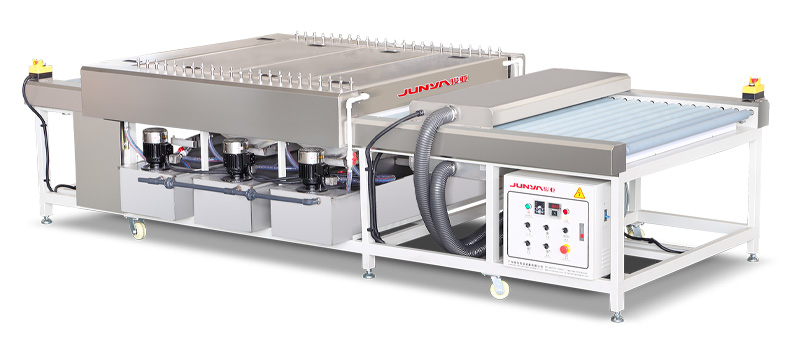Flat glass washer shares plasma washer quandaries
Flat glass washers and plasma washers are important pieces of equipment used in modern industry to treat material surfaces, and they play a key role in improving product quality and productivity. While flat glass cleaners focus on removing stains and impurities from glass surfaces, plasma cleaners use plasma technology to clean and modify surfaces at the nanoscale. The following is a detailed analysis of some of the difficult problems faced by plasma cleaners in the process of application:

1. Mastery of cleaning time
● Optimisation of the treatment time: the chemical modification caused by the plasma cleaner treatment of polymer surfaces is realised by oxygen radicals, and the longer the treatment time, the more obvious the discharge effect. Therefore, reasonable control of the processing time to achieve the best modification effect is a key point in the use of plasma cleaners.
● Balance of time and efficiency: too long treatment time may cause damage to the glass surface, while too short time may not achieve the expected treatment effect, so it is necessary to find a balance in the experiment and production practice.
2. Cleaning quality assurance
● Correct use of disc brushes: When the entrance washer is cleaning glass, the disc brushes are crucial to the cleaning effect on the glass surface. To ensure that stubborn stains can be removed, the disc brushes need to be set correctly and their height adjusted with the degree of wear.
● Application of liquid polish: Liquid polish used in conjunction with disc brushes can help to polish the glass surface more effectively, but how to correctly proportion and use the polish is also an important factor in ensuring cleaning quality.
3. Intelligent development of technology
● Advances in low-temperature plasma technology: plasma cleaning technology represents a leap forward in surface treatment technology, which provides an effect that cannot be achieved by traditional methods, but this technology is still under constant development.
● Application of intelligent system: With the development of intelligent technology, how to better integrate the intelligent control system into the plasma cleaner to achieve more precise control and automated operation is a direction for future development.
4. Technical difficulties of ultrasonic cleaning machine
● The role of ultrasonic transducer: ultrasonic cleaning machine in the cleaning of glass will produce fine bubbles, the rupture of these bubbles will produce a powerful shock wave to help remove stubborn dirt, but how to control the intensity and frequency of ultrasonic waves is a technical difficulty.
Cleaner selection and use: the choice of cleaners and how to use with ultrasonic technology is equally important to achieve the best cleaning results.
5. Hydrophilicity enhancement by plasma treatment
● Pre-coating treatment: Plasma cleaner treatment of glass effectively improves its surface properties, such as hydrophilicity, which is essential for improving the adhesion of subsequent coating or painting.
● Solution of paint fall problem: Paint fall problem due to surface contamination can be greatly reduced by plasma treatment, but how to quantify the effect of plasma treatment and adapt it to other parts of the production line requires further research and practice.
In addition, as the application of these devices continues to deepen, users will encounter many specific operational challenges and technical problems in the actual operation process. In the face of these challenges, equipment manufacturers and users need to work closely together to find solutions through continuous testing and technological innovation. For example, regular maintenance and upgrading of equipment, according to the actual results of the adjustment of operating parameters, as well as the training of operators to enhance their skills.
In conclusion, it can be seen that plasma cleaning technology and flat glass washing machines play an irreplaceable role in modern industrial production. Although the use of these efficient equipment will face many challenges, but with the development of science and technology and the accumulation of experience, I believe that these difficulties will be effectively resolved. In addition, the development trend of intelligence and automation will bring more innovative possibilities for these equipments in the future, which will further promote the industrial production to a higher quality and more efficient direction.
